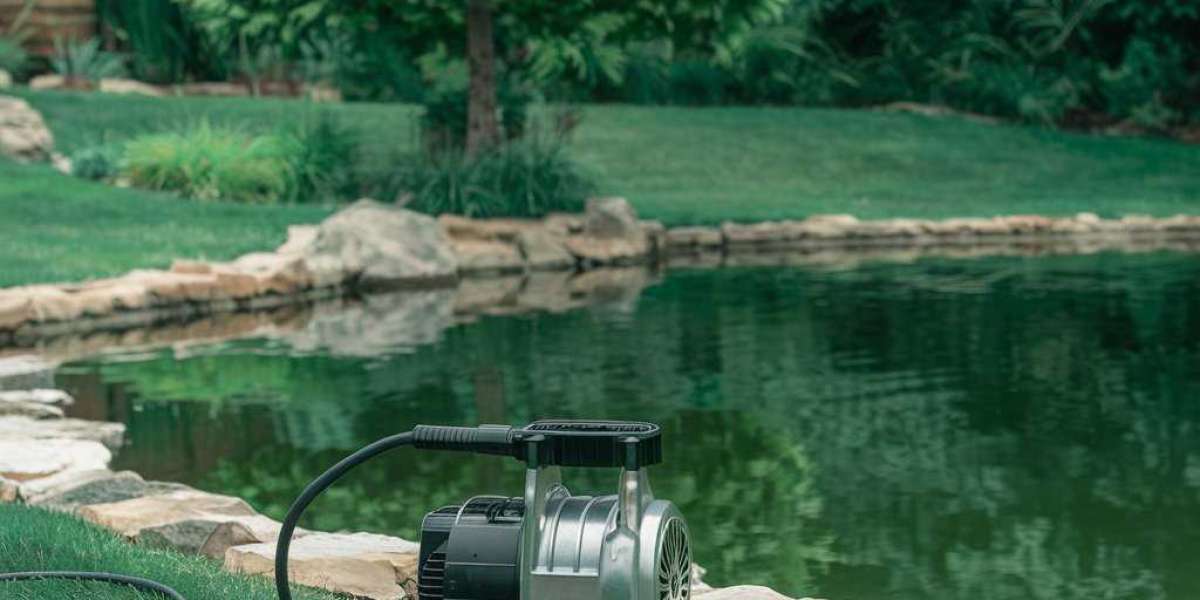A pond pump is the central system that keeps your pond water moving, clean, and oxygenated. Without a Pond Pump, water can become stagnant, leading to algae growth, foul odors, and poor conditions for fish and plants. It plays a crucial role in powering filtration systems, waterfalls, fountains, and UV clarifiers. The pump works by circulating water through filters to remove waste and debris. This continuous movement helps maintain water clarity and supports beneficial bacteria. A good pump also enhances the overall aesthetics of your pond. It’s a must-have for any healthy water feature.
How Does a Pond Pump Work?
Pond pumps operate by drawing water from the pond and pushing it through various components like filters and waterfalls. The impeller inside the pump spins to create the pressure needed for water movement. As water circulates, it collects debris and transports it to the filtration system for cleaning. This not only clears the pond but helps distribute oxygen throughout, which is essential for aquatic life. Some pumps also support UV clarifiers to control algae. Pumps can be submersible or external, depending on the pond size and setup. Their constant operation ensures a stable, clean environment.
What Are the Different Types of Pond Pumps?
There are several types of pond pumps, each suited to specific functions. Fountain pumps are designed for decorative features, creating visual appeal through various spray patterns. Waterfall pumps are built to handle higher flow rates and head heights, perfect for cascading features. Filter pumps are specialized to handle solids and push water through filtration systems efficiently. Utility pumps can be used temporarily for draining or cleaning. Magnetic drive pumps are energy-efficient and ideal for smaller setups. Each type serves a unique purpose in maintaining a beautiful and healthy pond system.
Submersible vs External Pond Pump?
Submersible pumps are placed directly in the pond water, often inside skimmers or filter boxes. They are easy to install, relatively quiet, and best for small to medium ponds. External pumps sit outside the pond and are typically used for larger systems. They offer greater energy efficiency, longer lifespans, and are easier to maintain without disturbing the pond. Submersible pumps are more discreet, while external pumps are more powerful. Choosing between them depends on your pond’s size, design, and functional needs. Both types are effective when selected and installed correctly.
How Do You Choose the Right Pond Pump for Your Pond?
Start by measuring your pond’s volume and understanding what features your pump will power, such as filters or waterfalls. Consider the required flow rate (GPH), which should allow the full pond volume to circulate every hour or two. Head height, or the vertical distance the pump must push water, also affects performance. Energy efficiency and durability are critical—opt for pumps with good reviews and solid warranties. Make sure the pump is compatible with other equipment like UV systems. Selecting the right pump leads to better water quality and less maintenance overall.

What Size Pond Pump Do You Need?
Choosing the correct size pond pump depends on your pond’s water volume and the equipment it supports. As a rule of thumb, your pump should circulate the pond’s total volume once every hour. For example, a 1,000-gallon pond needs a pump rated at 1,000 GPH or more. If your system includes waterfalls or pressurized filters, add extra capacity to account for head height and resistance. An undersized pump won’t circulate water effectively, leading to murky conditions. Oversized pumps waste energy and may overpower the pond’s design. Proper sizing ensures peak performance and energy savings.
How Do You Install a Pond Pump?
Installing a pond pump is a straightforward process with the right preparation. For submersible pumps, place them in a skimmer box or directly in the pond, ensuring they sit on a flat surface and are easily accessible. Connect tubing securely and route it to your filtration or waterfall feature. For external pumps, position them on a stable surface near the pond, and use check valves and priming pots to aid in start-up. Always follow the manufacturer’s instructions to avoid leaks or damage. Test the system before finalizing the setup. Proper installation ensures safe, long-term operation.
How Often Should You Clean and Maintain a Pond Pump?
Routine maintenance extends the life of your pond pump and keeps your pond clear. Check and clean the intake regularly to prevent blockages from leaves or debris. Rinse the impeller and housing every few weeks, especially during heavy algae growth. If your pump runs 24/7, inspect it monthly to ensure optimal performance. Replace worn parts like seals or gaskets as needed. During winter, either insulate or remove the pump depending on your climate. Keeping the pump clean minimizes energy consumption and prevents overheating. Consistent care results in a quieter, longer-lasting pump.

Why Pond Owners Trust Grand Champion Technologies (GC Tek)?
Grand Champion Technologies (GC Tek) is a top-tier brand trusted by pond professionals and enthusiasts alike. Their pumps are engineered for unmatched durability, powerful flow, and energy efficiency. The Grand Champion Technologies (GC Tek) products are proudly made in the USA and built to handle real-world pond conditions with ease. Whether you need a pump for filtration, waterfalls, or circulation, GC Tek offers models tailored to your exact needs. Their customer service and product support are second to none, giving buyers peace of mind. With GC Tek, you’re not just buying equipment—you’re investing in long-term pond success.








